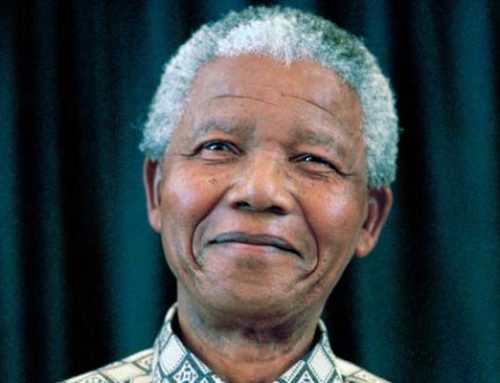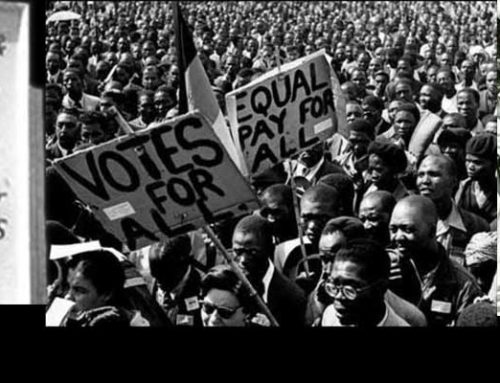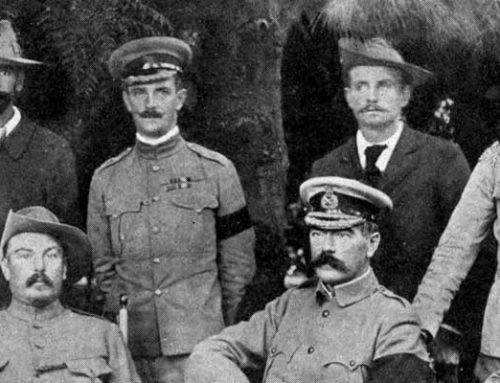Prince Henry the Navigator seldom left his home in Portugal, but he helped make it possible for the first Europeans to explore Africa. In Henry’s time, the ocean was dangerous, and Africa was a mysterious place containing endless miles of sand. Today we know this sand as the Sahara Desert. Although it isn’t endless, the Sahara is the largest hot desert in the world, and its expanse isolated many sophisticated cultures south of the deserts from the rest of the world.
Henry wanted to find a water route to India. The passage to India over land was long, slow, and dangerous. A ship could carry more goods to and from India than even the largest caravans, but Europeans could only guess that sailors could circumnavigate, or go around, Africa.
Prince Henry helped unlock the secrets of Africa. Henry set up a school for sailors to learn the ocean’s secrets. He paid for many sailing expeditions out of the Portuguese treasury. Henry also employed cartographers who created the most sophisticated maps of their time. The maps made it possible for sailors to learn from previous expeditions.
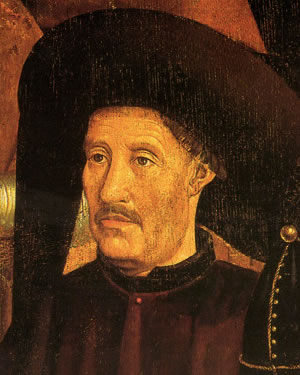
Henry_the_Navigator
Henry the Navigator (1394 – 1460), better known was the fifth child of the Portuguese King John I and responsible for the early development of Portuguese exploration and maritime trade.
Henry was a visionary. A visionary is someone who can imagine something that hasn’t yet happened. Henry owned a globe when many people thought the world was flat. Though Europeans had not explored the region, Henry believed that Africa was not infinite and that he would find a water route to India if his sailors could circumnavigate the continent.
When Henry died in 1460, his sailors had only traveled as far as the Canary Islands in West Africa. Twenty-eight years later, Bartholomeu Dias proved that it was possible to circumnavigate Africa when he reached the continent’s southern tip, now known as the “Cape of Good Hope.” In 1499, Vasco da Gama was the first sailor to travel from Portugal to India. A few years earlier, Queen Isabella of Spain hired a sailor from Genoa to reach India by sailing west. It wasn’t until years later that anyone understood that the “Indians” he encountered weren’t actually from India.
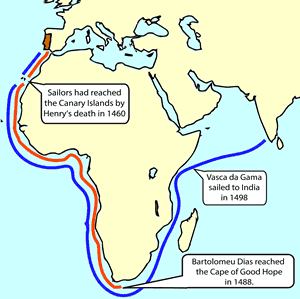
Africa_discovery_route
Portuguese sailors had only reached the Canary Islands in West Africa by the time of Henry’s death, but in 1488, Bartholomeu Dias proved that Africa could be circumnavigated when he reached the southern tip of the continent. Bartholomeu Dias proved that Africa could be circumnavigated when he reached the southern tip of the continent. A decade later, Vasco daGama circumnavigated Africa and sailed to India.
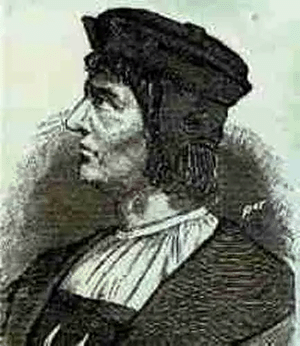
Portuguese mariner Bartholomeu Dias reached the southern tip of Africa in 1488. Dias wanted to continue the journey, but his exhausted crew insisted on returning to Portugal.
Prince Henry the Navigator Resources
Download this lesson as Microsoft Word file or as an Adobe Acrobat file.
Mr. Donn has an excellent website that includes a section on African History.
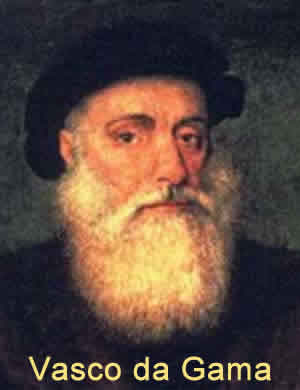
Vasco_da_Gama
Vasco da Gama (1465 – 1524) was a Portuguese explorer who became the first European to reach India by sea.


